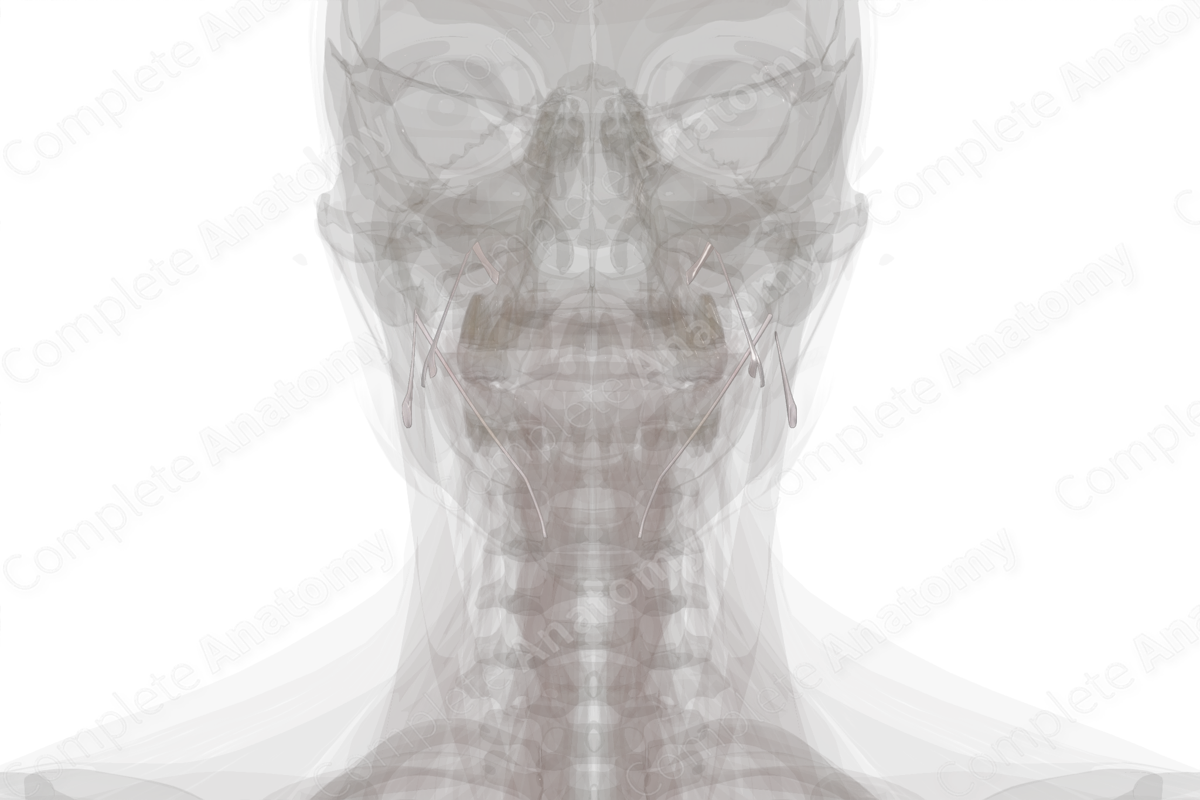
Description
A syndesmosis is a slightly movable fibrous joint, and in the cranium, there are two of these joints, though they are not in the expected formation. A joint is usually the articulation of two bones that are in close contact with each other. However, in the cranium, these syndesmotic joints are made up of bones that are rather far from each other and joined by a ligament.
—The pterygospinous ligament attaches to the posterior border of the lateral pterygoid plate and extends to the spinous process of sphenoid bone.
—The stylohyoid ligament attaches to the styloid process of the temporal bone and extends to the lesser cornu of the hyoid bone.
—The stylomandibular ligament extends from the styloid process of the temporal bone to the angle and posterior border of the angle of the mandible, between the attachments of the masseter and medial pterygoid muscles.
—The sphenomandibular ligament runs from the spine of the sphenoid bone to the lingula of the mandible. The inferior alveolar nerve is a close relation to the sphenomandibular ligament and descends between the ligament and the ramus of the mandible before entering the mandibular foramen.
—The sphenomandibular ligament
The movement associated with these ligaments is considered movement of the cranial syndesmoses.




